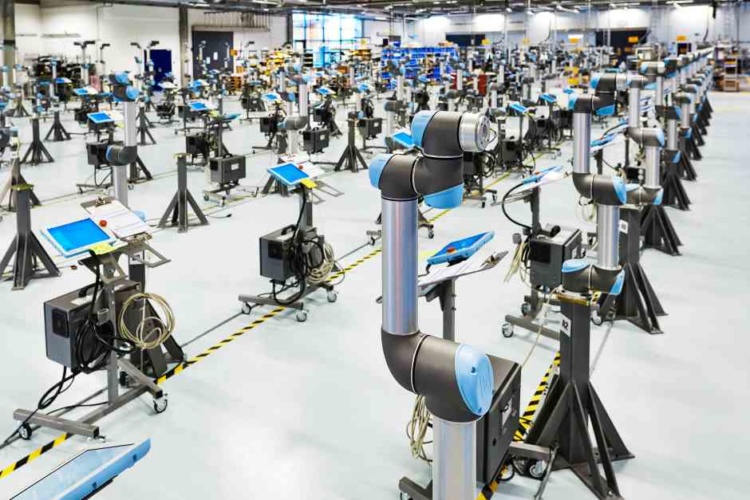
Onshoring could prove a rewarding post-pandemic recovery strategy for many UK-based OEMs; helping to de-risk supply chains and facilitating the adoption of more flexible, demand-driven business models. But are they ready to take advantage of this value-driving opportunity, asks Vendigital's Paul Cooper?
In the past few months, the lockdown restrictions have caused considerable disruption to many manufacturing plants; forcing them to either shut down altogether or switch production lines over to goods in high demand, such as antibacterial cleansers and personal protection equipment (PPE). Now, as demand shows tentative signs of recovery and supply lines re-open, there is an opportunity for businesses to leave the disruption behind and become a disruptor in their sector.
Poll: will pandemic drive reshoring of UK manufacturing?
For many manufacturers, the speed at which demand plummeted and supply chains closed down at the onset of the pandemic was unprecedented. For those with longer, more complex supply chains, spread geographically, the impact was both swift and severe. It is no surprise therefore, that when planning to re-start operations, some OEMs may want to consider onshoring, or nearshoring their supply base, by switching to suppliers that can provide goods and services closer to their production facilities and their end market.
Prior to the pandemic, the offshoring trend was already in decline. This was partly due to rises in overseas wage rates and the cost and time involved in shipping goods from Asia to Western countries. The longer and more complex the supply chain, the more stock had to be stored, adding to the OEM’s cost base. Just as the cost benefits of sourcing goods and services in Asia have depleted, in the wake of Covid-19 the case for onshoring has grown stronger.
Businesses can achieve significant efficiencies and adopt a more agile way of working
Sourcing goods and services closer to customers and their end markets can help to de-risk supply chains at the same time as shortening the overall lead time from order to delivery. It could also help to address uncertainty surrounding future trade tariffs on goods movements in and out of the EU, when the Brexit transition period expires at the end of this year. In 2017, shortly after the EU referendum, a survey by the CIPS found that 32 per cent of UK businesses working with EU suppliers were looking for alternative suppliers based in the UK.
While interest in onshoring is expected to continue to increase in the short to medium term, it won’t necessarily meet the requirements of all OEMs. Businesses and their investors will be seeking to increase business resilience and in some cases this might be best achieved by onshoring certain critical supplies, while continuing to source some materials overseas. This could allow them to take advantage of government/regional support or other supply chain-related dynamics.
Since the onset of the pandemic, the drive to onshore operations has been particularly evident among outsourced call centre operations, due to the forced closure of offshore hubs in Asia. In many cases, mid-sized businesses in the financial and medical sectors have been able to pivot back onshore quickly. Also having experienced significant disruption, some Western pharmaceutical companies have been exploring ways to bring their R&D and production facilities back to countries such as the US, Canada and Mexico. By onshoring or nearshoring quickly, they hope to gain a competitive advantage as commercial activity begins to increase.

For OEMs and other manufacturers that might be considering onshoring operations, it is important to develop a strategic plan, which takes account of supply chain risk, continuity of supply, quality and price. Before making a decision, businesses should use data analytics and modelling to assess the cost reduction potential of shifting their operational footprint and the value such changes might bring in the long term. For example, will it be possible to source raw materials of the right quality, at competitive prices, relative to those available in Asia? And how much profit will there be in the final product?
As well as improving operational resilience, the main benefits of onshoring in the current climate are the ability to operate to much shorter lead times, with a reduced inventory, and to flex production to meet market demands. When combined with investment in low-cost automation such as cobots, 3D printing and AI-enabled data management systems, businesses can achieve significant efficiencies and adopt a more agile way of working.
Some sectors are better placed than others to capitalise on the onshoring trend. In the automotive sector for example, platform-based production lines supported by long-term supply agreements are geared to delivering specific outputs on a weekly basis. Lacking the flexibility to respond to the requirements of individual customers, automotive OEMs have to predict the vehicle specification that is likely to generate the highest demand, and supply from stock. For these businesses, adopting an on-demand business model will pose challenges, but the potential rewards could be worth the pain. For many mid-sized manufacturers on the other hand, it is possible to pivot operations more readily, with less risk of disruption and less up-front cost.
Paul Cooper is director and industrial manufacturing sector specialist at management consultancy, Vendigital





Glasgow trial explores AR cues for autonomous road safety
They've ploughed into a few vulnerable road users in the past. Making that less likely will make it spectacularly easy to stop the traffic for...